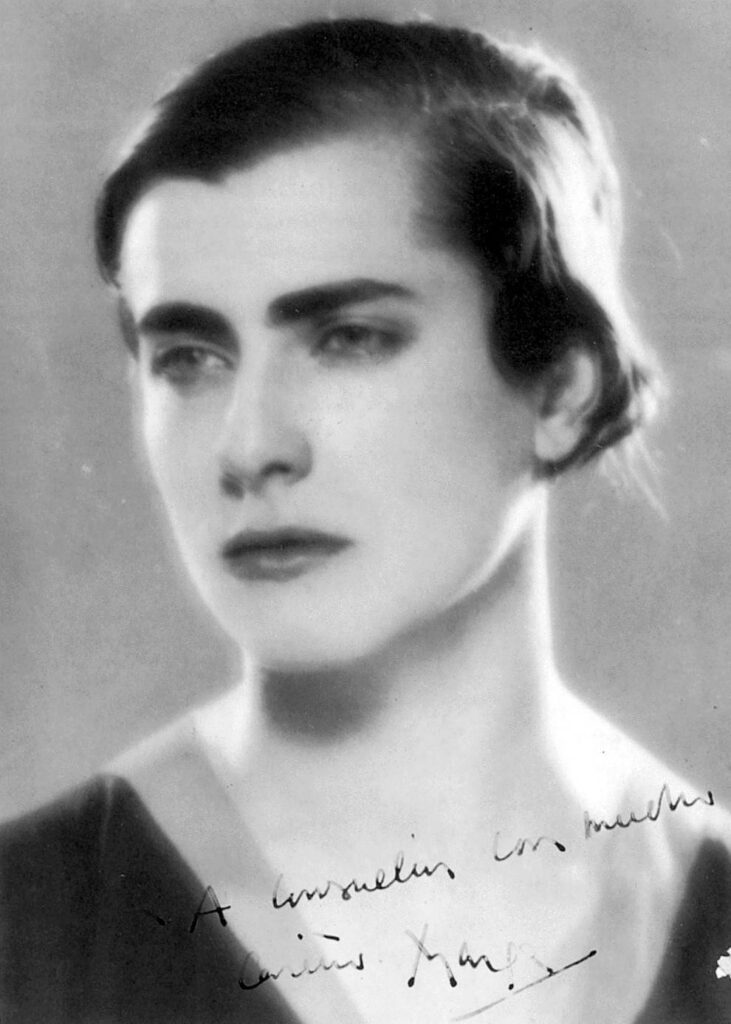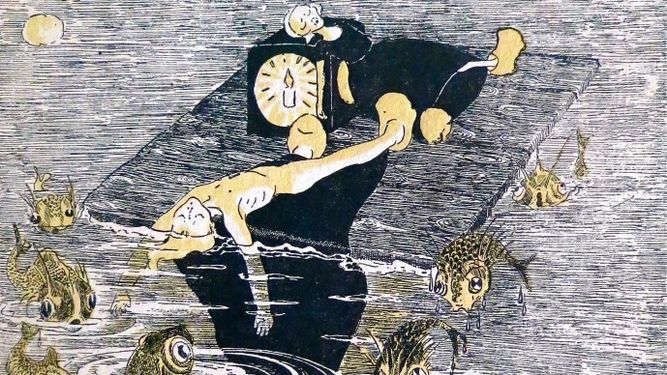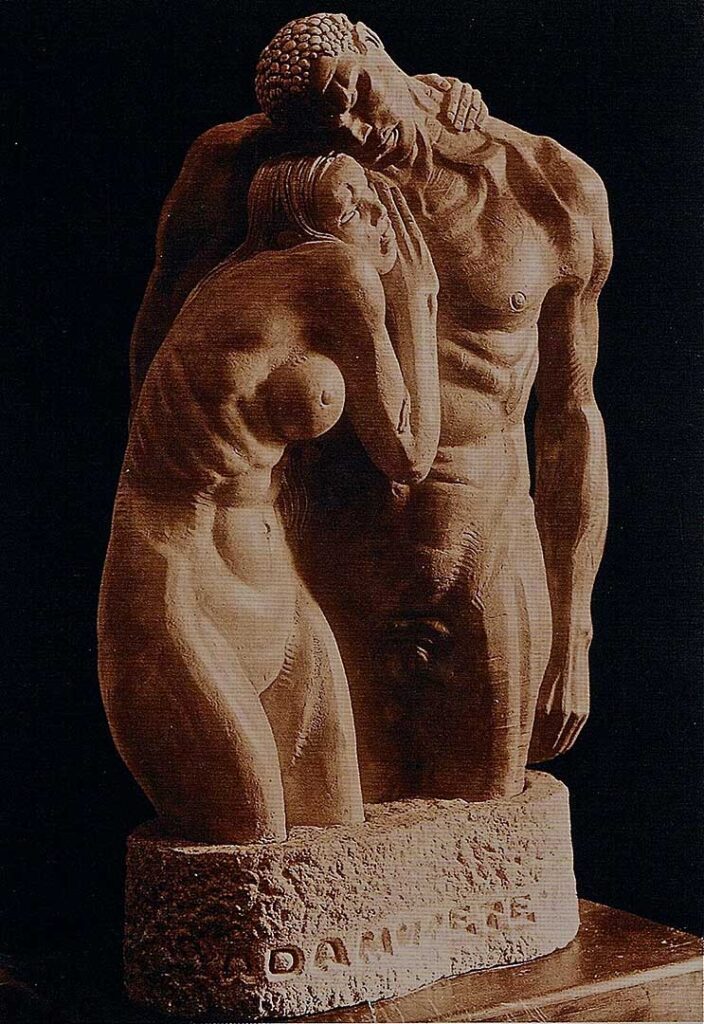The Veil of Isis #3
Marga Gil Roësset
Three years ago, in the pages of ABC Cultural of February 7, 1997, Blanca Berasátegui recovered, from a human and literary perspective, the memory of Margarita Gil Roëssetborn in Madrid in 1908 and died in the same city in 1932. Draughtswoman and sculptor, who, in love with Juan Ramón Jiménezended up committing suicide in his youth. In May 2000, the Fine Arts Circle and with the police station of Ana Serrano -who defended the genius of this artist-, produced the first exhibition of MargaThe exhibition, showing drawings (most of them illustrations of stories) and sculptures that escaped the destruction to which the young woman subjected all her works before her death.
The exhibition testified to the intensity and variety of the literary world in which the existence of the Margaand confirms the unhealthy sensitivity and artistic precocity of the girl, always self-taught, although she seems to have received some workshop advice from the painter. López Mezquitaas well as some influence -especially on the Bust of Zenobia Camprubíhis best piece of Victorio Macho. In illustration, he combined modernism and symbolism, sometimes following the linear drawing of synthetic design typical of modern illustration between the wars. And in her sculpture, together with the elementary, self-taught character of some pieces, her strongly corporal, volumetric, strong and sensual concept of sculpture stands out, as well as her facility to compose -The first jealousy- and to model, hurrying the form -Woman's head-. As a sculptor she was accepted in the National Exhibitions of Fine Arts of 1930 and 1932. From those public presences Bernardino de Pantorba no mention or comment is made. To us, we only get the perfume of evident faculties, together with the bitterness of his own verb Juan Ramon: "Perhaps he thought that he did not live to his taste. Who can make his taste! Perhaps he could not realize his work! Who can do her work? But she wanted no middle ground. And she decided with supreme will, to shorten her life.".
"Don't read it now.". These were the last words that Marga Gil Roësset said to Juan Ramón JiménezShe was in the poet's house in Padilla Street, Madrid, as she left a yellow folder on his desk. It contained the revelation of her impossible love for him, which had led her to a fatal decision. Marga left the writer's office, went to his workshop, where she had been working for the last months, and destroyed all his sculptures, except for a bust of Zenobia Camprubíthe wife of his beloved. "Don't read it now."... He left the place to fulfill the destiny he had foreseen. He first went through the Retiro Park; then he took a cab to the house of some uncles and aunts in Las Rozas and there he shot himself in the temple.
It was Thursday, July 28, 1932. She was 24 years old; he was 51. Eight months earlier she had met the poet and his wife, with whom she became a sincere and affectionate friend. But in the young painter and sculptor, whom he Juan Ramon and Zenobia called "the girl"In the same way, an unrequited love passion was also unleashed in silence. Threatening. Until that love colonized her whole life and turned it into tragedy.
This wish was written in his angular handwriting on one of the pages of the folder he gave to Juan Ramón Jiménez (1881-1958). He wrote them in the last weeks of that summer. The author listened to him. "Don't read it now.". A little shadow covered his heart forever. A little light came out of it for his poetic work. That autumn of 32, he wanted to pay tribute to her by publishing the manuscript of the diary of Gilbut he could not. In 1936, he went almost unexpectedly into exile because of the Civil War. Eighty-three years after the suicide of Marga Gil and the will of Juan Ramón Jiménez (JRJ), the poet's wish now becomes a reality. It is entitled Mara. Edition of Juan Ramón Jiménez and is published by the José Manuel Lara Foundation. Add a foreword by Carmen Hernández-Pinzónrepresentative of the heirs of JRJa text by Marga Clarckthe artist's niece, and writings of the poet and his wife about Marga Gil. A literary reliquary accompanied by facsimiles of the sculptor's notes and several of her drawings and photos.
Love, silence, joy, despair, love. The bewilderment is captured in the note that the young woman left to Zenobia Camprubí: "Zenobita... you will forgive me... I have fallen in love with Juan Ramón! And although loving... and falling in love is something that happens to you just because, without your fault... to me at least, it has happened to me... I have felt it when it was already... natural... that if you only went with people you were not attracted to... you would remove all danger... but that is stupid".
This confession appeared in that diary that had been lost for so many years. Since 1939, when three assailants -Felix Ros, Carlos Martínez Barbeito and Carlos Sentís- robbed the house of JRJ while he was in exile. The poet, who would win the Nobel Prize for Literature in 1956, was always anxious about the fate of these documents. He always asked about them to his great friend Juan Guerrero. You remember it Carmen Hernández-Pinzóndaughter of FranciscoThe author's nephew, nephew of the author of Espacio and representative of his heirs. Part of them were disclosed in 1997 by the ABC newspaper. The suicide of Gil greatly affected JRJ and his wife. "They were both very despondent, and he didn't want to write for a while. They never forgot her."he says Carmen.
That "Don't read it now." is a glimpse of the love that revitalizes life and, at the same time, sterilizes those who are not reciprocated, while living on secret crumbs that are the triumph of their existence:
It reads as follows: "...And you don't see me... nor know that I go... but I go... my hand... in my other hand... and so content...".... because I am going to your side".
Now everyone knows it. And she was more than that happy, fatal love whisper. "I want her to be known as the brilliant artist she was and still is. Many scholars and specialists in the avant-garde of the 20th century have dedicated their time to researching her work," says Marga Clarck. The publication of the diary seems important to her, now that the figure of her aunt is beginning to be recognized. She trusts that it will serve "so that she can navigate on her own because her work is very powerful. And Juan Ramón wanted her to go down in history as an artist.
The poet knew it. That unknown love was a happy part of his life, even if he didn't ask for it. It was his, too. A corner of his house immortalized it. After the death of MargaHe had an oak sideboard made, on which he placed the bust of Zenobia sculpted by "the girl". The face of the love of his life chiseled by the woman who could not bear to live without him.
Musical content in order of appearance:
01. Ernesto Halffter - Carmen -1926 (excerpt)
02. Pastora Imperio - The dancer - 1922
03. Tito Schipa - Rosalinda - 1922
04. Blanca Pozas and Choir - The whole year is Carnival -1927
05. Azuley Blanco Marimba Band - Wounded bird - 1924
06. Gustavo Pittaluga - La romería de los cornudos - 1933 (excerpt)



